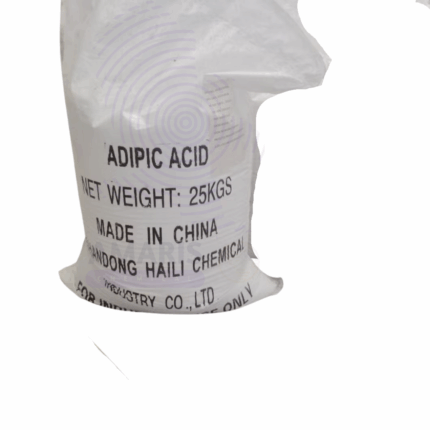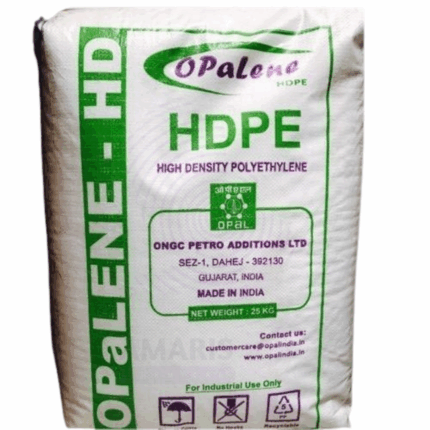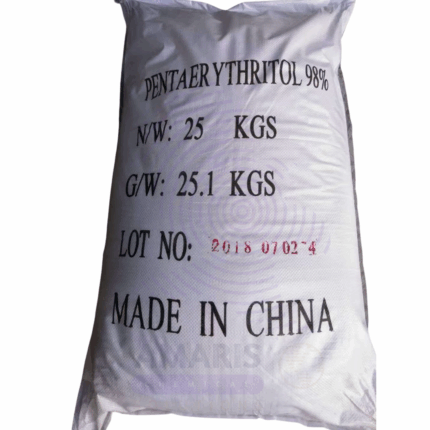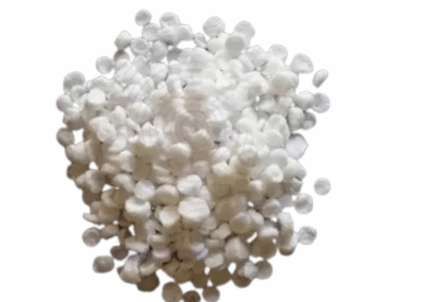
Ammonium Iodide Extra Pure
$ 17.00 Original price was: $ 17.00.$ 16.78Current price is: $ 16.78.

Ammonium II Sulphate Extra Pure
$ 18.00 Original price was: $ 18.00.$ 17.89Current price is: $ 17.89.
Natural rubber
Whatsapp Order
Natural Rubber is an elastomer harvested from the latex sap of rubber trees (Hevea brasiliensis). It is a highly elastic, resilient, and durable polymer used globally in numerous industries. Natural Rubber is prized for its excellent tensile strength, flexibility, abrasion resistance, and ability to withstand deformation. It is widely utilized in manufacturing tires, industrial goods, footwear, and medical devices. The product is available in various forms such as sheets, blocks, crepes, and latex concentrate.
Category: Monomers
Tags: High Elasticity, Latex Rubber, Natural Rubber, Rubber industry, Rubber Raw Material
Description
Table of Contents
Toggle
Natural rubber
Primary Uses
- Automotive Industry
- Manufacturing tires for vehicles including cars, trucks, motorcycles, and aircraft.
- Production of seals, gaskets, belts, hoses, and vibration dampers.
- Footwear Industry
- Used in soles, insoles, and other shoe components for flexibility and durability.
- Industrial Applications
- Production of conveyor belts, rubber mats, rollers, and industrial gloves.
- Used in shock absorbers, vibration mounts, and other heavy-duty rubber goods.
- Medical and Healthcare
- Used in surgical gloves, catheters, tubing, and various medical devices requiring elasticity and biocompatibility.
Secondary Uses
- Adhesives and Coatings
- Used in natural rubber-based adhesives and latex paints for flexibility and adhesion.
- Sports Goods
- Used in the manufacture of balls, grips, and other sports equipment requiring elastic properties.
- Consumer Goods
- Used in balloons, rubber bands, erasers, and household items.
- Textile Industry
- Incorporated into elastic threads and fabrics for stretchability.
- Electrical Industry
- Used for insulation and protective coatings in cables and electrical components.
KEY PRODUCT FEATURES
1. Basic Identification Attributes
- Chemical Name (IUPAC): Polyisoprene (natural cis-1,4-polyisoprene)
- Common/Trade Name: Natural Rubber
- CAS Number: 9006-04-6
- HS Code: 4001.10.00
- Synonyms: Latex rubber, Hevea rubber
2. Physical & Chemical Properties
- Physical State: Solid sheets, crepe, or latex liquid
- Color & Odor: Pale yellow to brown; characteristic natural rubber odor
- Solubility: Insoluble in water; soluble in organic solvents such as benzene and toluene
- Molecular Weight: High molecular weight polymer
- Elasticity: High elasticity and tensile strength
3. Safety & Hazard Attributes
- GHS Classification: Not hazardous under normal handling
- Toxicity: Low toxicity; possible allergenic reactions to latex proteins
- Exposure Limits: Avoid inhalation of powdered forms or latex dust
4. Storage & Handling Attributes
- Storage Conditions: Store in cool, dry, and well-ventilated areas away from direct sunlight and ozone sources
- Container Type: Wrapped sheets, bales, or drums for latex
- Shelf Life: Typically 1–2 years if stored properly
- Handling Precautions: Avoid exposure to heat, sunlight, and ozone to prevent degradation
5. Regulatory & Compliance Attributes
- Complies with ASTM and ISO standards for natural rubber products
- Compliant with medical-grade specifications where applicable
- Meets REACH and other chemical safety regulations
6. Environmental & Health Impact
- Biodegradability: Biodegradable under natural environmental conditions
- Ecotoxicity: Low environmental impact when disposed of properly
- Bioaccumulation: Not expected to bioaccumulate
- Allergenicity: Latex proteins may cause allergic reactions in sensitive individuals
SAFETY HANDLING PRECAUTIONS
Safety Handling Precautions
- PPE Required: Gloves recommended when handling latex products; dust masks if powdered forms present
- Handling Guidelines: Minimize exposure to latex dust; work in ventilated areas
- Storage Measures: Protect from ozone, sunlight, and high temperatures
First Aid Measures
- Inhalation: Move to fresh air if respiratory irritation occurs
- Skin Contact: Wash with soap and water; discontinue use if allergic reaction develops
- Eye Contact: Rinse with water for 15 minutes; seek medical advice if irritation persists
- Ingestion: Not applicable; seek medical advice if large amounts swallowed
Firefighting Measures
- Fire Hazards: Combustible; emits toxic fumes when burned
- Extinguishing Media: Use water spray, foam, dry chemical, or CO₂ extinguishers
- Special Precautions: Use protective equipment to avoid inhalation of smoke
- Hazardous Combustion Products: Carbon monoxide, carbon dioxide, sulfur oxides, and other toxic gases
Related products
Adipic Acid
$ 3.20
HDPE Film F52H04
HDPE Film F52H04 Opalene is a high-density polyethylene film grade resin specially engineered for producing thin, flexible, and high-strength films. It is designed for blown film extrusion processes, delivering excellent mechanical properties, superior clarity (opal/opalene finish), and consistent gauge control. This resin offers high tensile strength, good puncture resistance, and excellent moisture barrier properties, making it ideal for packaging applications requiring durability and flexibility. Its balanced processing characteristics enable fast extrusion rates and uniform film thickness.
LLDPE film Opalene F20015
LLDPE film Opalene F20015 is a high-quality linear low-density polyethylene (LLDPE) film known for its excellent clarity, toughness, and flexibility. It is produced using linear low-density polyethylene resin, offering superior mechanical properties and puncture resistance compared to conventional low-density polyethylene films. Opalene F20015 is widely used in packaging applications where strength, transparency, and sealability are critical. Its balanced properties make it suitable for various industrial and consumer packaging needs.
Pentaerythritol
Pentaerythritol is a high-purity, crystalline polyol used extensively in the production of alkyd resins, synthetic lubricants, explosives, and plasticizers. Its multifunctional alcohol structure provides excellent stability, high melting point, and good compatibility with various chemicals. Pentaerythritol 98% is valued for its role as a building block in chemical syntheses, offering enhanced durability, flexibility, and resistance in end products.
Polyvinyl Chloride Resin
Polyvinyl Chloride Resin is a white, odorless powder widely used as the base material in the production of both rigid and flexible PVC products. It is produced by polymerizing vinyl chloride monomer (VCM) and is categorized by K-value, which defines molecular weight and processing characteristics. PVC resin is valued for its durability, chemical resistance, electrical insulation, and flame retardancy. It is one of the most versatile plastics used across multiple industries including construction, electrical, automotive, packaging, and healthcare.
PP Raffia 1003
PP Raffia 1003 is a polypropylene homopolymer resin commonly used for manufacturing raffia fibers and woven sacks. It offers high tensile strength, excellent dimensional stability, and good resistance to chemicals and environmental stress. This grade is ideal for producing durable woven fabrics used in packaging, agriculture, and construction applications.
Styrene Polymer Copolymer
Styrene Polymer Copolymer is a high-performance copolymer consisting primarily of styrene combined with other monomers such as acrylonitrile or butadiene, designed to offer enhanced mechanical properties, chemical resistance, and processability. Supplied in bulk packaging of 230kg, it is widely used in plastics, adhesives, coatings, and rubber industries. This copolymer provides excellent toughness, thermal stability, and versatility, making it suitable for demanding industrial applications.
Toluene Diisocyanate
Toluene Diisocyanate is a highly reactive chemical compound primarily used as a key raw material in the production of polyurethane foams. It is a colorless to pale yellow liquid with a pungent odor and is valued for its ability to react with polyols to form flexible and rigid polyurethane products. TDI’s versatility makes it indispensable in industries like furniture, automotive, insulation, and coatings.


 Preservatives(food)
Preservatives(food) Flavor Enhancers
Flavor Enhancers Acidulants
Acidulants Sweeteners
Sweeteners Antioxidants
Antioxidants Colorants(food)
Colorants(food) Nutraceutical Ingredients (food)
Nutraceutical Ingredients (food) Nutrient Supplements
Nutrient Supplements Emulsifiers
Emulsifiers
 Collectors
Collectors Dust Suppressants
Dust Suppressants Explosives and Blasting Agents
Explosives and Blasting Agents Flocculants and Coagulants
Flocculants and Coagulants Frothers
Frothers Leaching Agents
Leaching Agents pH Modifiers
pH Modifiers Precious Metal Extraction Agents
Precious Metal Extraction Agents
 Antioxidants(plastic)
Antioxidants(plastic) Colorants (Pigments, Dyes)
Colorants (Pigments, Dyes) Fillers and Reinforcements
Fillers and Reinforcements Flame Retardants
Flame Retardants Monomers
Monomers Plasticizers
Plasticizers Polymerization Initiators
Polymerization Initiators Stabilizers (UV, Heat)
Stabilizers (UV, Heat)
 Antifoaming Agents
Antifoaming Agents Chelating Agents
Chelating Agents Coagulants and Flocculants
Coagulants and Flocculants Corrosion Inhibitors
Corrosion Inhibitors Disinfectants and Biocides
Disinfectants and Biocides Oxidizing Agents
Oxidizing Agents pH Adjusters
pH Adjusters Scale Inhibitors( water)
Scale Inhibitors( water)
 Antioxidants(cosmetic)
Antioxidants(cosmetic) Emollients
Emollients Fragrances and Essential Oils
Fragrances and Essential Oils Humectants
Humectants Preservatives
Preservatives Surfactants(cosmetic)
Surfactants(cosmetic) Thickeners
Thickeners UV Filters
UV Filters
 Fertilizers
Fertilizers Soil Conditioners
Soil Conditioners Plant Growth Regulators
Plant Growth Regulators Animal Feed Additives
Animal Feed Additives Biostimulants
Biostimulants Pesticides (Herbicides, Insecticides, Fungicides)
Pesticides (Herbicides, Insecticides, Fungicides)
 Active Pharmaceutical Ingredients (APIs)
Active Pharmaceutical Ingredients (APIs) Excipients
Excipients Solvents(pharmaceutical)
Solvents(pharmaceutical) Antibiotics
Antibiotics Antiseptics and Disinfectants
Antiseptics and Disinfectants Vaccine Adjuvants
Vaccine Adjuvants Nutraceutical Ingredients (pharmaceutical)
Nutraceutical Ingredients (pharmaceutical) Analgesics & Antipyretics
Analgesics & Antipyretics
 Analytical Reagents
Analytical Reagents Solvents(lab)
Solvents(lab) Chromatography Chemicals
Chromatography Chemicals Spectroscopy Reagents
Spectroscopy Reagents microbiology-and-cell-culture-reagents
microbiology-and-cell-culture-reagents Molecular Biology Reagents
Molecular Biology Reagents Biochemical Reagents
Biochemical Reagents Inorganic and Organic Standards
Inorganic and Organic Standards Laboratory Safety Chemicals
Laboratory Safety Chemicals Specialty Laboratory Chemicals(Special Laboratory Equipment)
Specialty Laboratory Chemicals(Special Laboratory Equipment)
 Demulsifiers
Demulsifiers Hydraulic Fracturing Fluids
Hydraulic Fracturing Fluids Scale Inhibitors(oil)
Scale Inhibitors(oil) Surfactants(oil)
Surfactants(oil) Drilling Fluids
Drilling Fluids
 Dyes and Pigments
Dyes and Pigments Bleaching Agents
Bleaching Agents Softening Agents
Softening Agents Finishing Agents
Finishing Agents Antistatic Agents
Antistatic Agents
 Admixtures
Admixtures Waterproofing Agents
Waterproofing Agents Sealants and Adhesives
Sealants and Adhesives Curing Compounds
Curing Compounds Concrete Repair Chemicals
Concrete Repair Chemicals Anti-Corrosion Coatings
Anti-Corrosion Coatings
 Surfactants(cleaning)
Surfactants(cleaning) Builders
Builders Enzymes
Enzymes Solvents (Cleaning)
Solvents (Cleaning) Fragrances
Fragrances
 Electronic Chemicals
Electronic Chemicals Catalysts
Catalysts Lubricants
Lubricants Photographic Chemicals
Photographic Chemicals Refrigerants
Refrigerants Automotive chemicals
Automotive chemicals Pyrotechnic Chemicals
Pyrotechnic Chemicals
 Biodegradable Surfactants
Biodegradable Surfactants Bio-based Solvents
Bio-based Solvents Renewable Polymers
Renewable Polymers Carbon Capture Chemicals
Carbon Capture Chemicals Wastewater Treatment Chemicals
Wastewater Treatment Chemicals
 Pigments
Pigments Solvents(paint)
Solvents(paint) Specialty Coatings
Specialty Coatings Binders/Resins
Binders/Resins Additives
Additives Driers
Driers Anti-Corrosion Agents
Anti-Corrosion Agents Functional Coatings
Functional Coatings Application-Specific Coatings
Application-Specific Coatings
 Fresh Herbs
Fresh Herbs Ground Spices
Ground Spices Whole Spices
Whole Spices Spice Blends
Spice Blends Dried Herbs
Dried Herbs
 Leavening Agents
Leavening Agents Dough Conditioners
Dough Conditioners Flour Treatments
Flour Treatments Fat Replacers
Fat Replacers Decoratives
Decoratives Preservatives(baking)
Preservatives(baking)
 Plasticizers & Softeners
Plasticizers & Softeners Reinforcing Agents
Reinforcing Agents Adhesion Promoters
Adhesion Promoters Vulcanizing Agents
Vulcanizing Agents Antidegradants
Antidegradants Blowing Agents
Blowing Agents Fillers & Extenders
Fillers & Extenders Accelerators & Retarders
Accelerators & Retarders
























